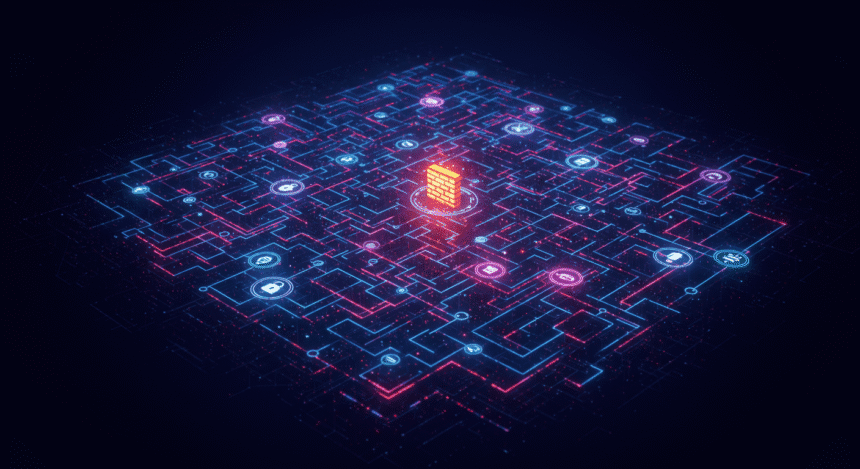One of the things we have talked about a lot on Smart Data Collective is the growing threat of cybercrime in the age of big data. As organizations collect and analyze massive amounts of information, the opportunities for cybercriminals to exploit weaknesses in digital infrastructure have grown exponentially. You may think your company is too small to be targeted, but attackers often use automated tools to scan for vulnerabilities across the board. There are no guarantees when malicious bots are launching millions of probes every hour.
Cyberattacks are far more frequent than most people realize. The Microsoft Digital Defense Report found that there are 600 million cyberattacks per day around the globe. You can no longer assume your current protections are enough. Keep reading to learn more.
How AI Has Changed the Threat
There are major changes happening in the cyber threat landscape, and many of them are being driven by artificial intelligence. It is no surprise that a report from DarkReading.com revealed 71% of hackers believe AI increases the value of their attacks. You should assume that attackers are constantly updating their methods using the latest tools. There are always new exploits being discovered that even the best-prepared organizations might miss.
You must understand how big data can expose new vulnerabilities if not properly secured. It is true that storing and processing large volumes of information can create entry points if access control is not carefully managed. You should treat every dataset—no matter how seemingly harmless—as a potential source of risk. There are serious consequences when attackers gain access to data repositories tied to customer profiles, financial information, or internal communications.
It is more difficult than ever to protect networks as digital systems grow more complex. Balasubramani Murugesan of Cyber Defense Magazine explained that AI and big data have added layers of complication to cybersecurity strategies. There are too many devices, platforms, and access points for traditional security models to handle alone. You will need more advanced monitoring to keep up with the speed of modern attacks.
You are not alone in facing these challenges, but that doesn’t make the threat any smaller. There are steps that every organization must take to reduce exposure, such as encrypting sensitive data, requiring multi-factor authentication, and regularly updating systems. It is critical to monitor behavior patterns for anomalies that might signal an intrusion. You should never assume that one-time protections will stand the test of time.
Lateral movement is an attack technique used by cyber attackers to increase their levels of access across a network after gaining initial access. The goal? To exfiltrate secure data or reach high-value targets within an organization. Lateral movement is becoming a growing concern in edge computing, especially in distributed networks.
Let’s explore how data gravity and edge nodes affect your security, how command-and-control attacks work, and how you can protect your critical systems from lateral movement attacks.
Data Gravity
To understand lateral movement, let’s first explore Data Gravity. This concept describes the tendency of data to attract the creation of applications and services, which leads businesses to centralize data storage. Centralization often creates the potential for a single point of failure.
However, in an edge-first world, data is processed closer to the source. While this reduces the need for centralized storage, it also creates multiple points of attack. These decentralized points are also known as edge nodes and can widen the attack surface.
Edge Nodes
An edge node is any computing resource at the edge of a network that helps reduce latency and bandwidth usage by processing data locally. Edge nodes include IoT devices, local servers, and sensors.
Although edge nodes can make data processing faster, they carry the downside of creating multiple entry points for cyber threats. One or many edge nodes may be compromised, creating a doorway for lateral movement, especially in high-volume data centers and environments.
With more data gravity and edge nodes comes an elevated risk of attack, especially if your organization distributes sensitive data across a broader network. Not only is it harder to secure uniformly, but it also becomes harder to protect your network from lateral movement if any edge node is compromised.
Intercepting Command-and-Control (C2) Traffic
Command-and-control (C2) traffic is the communication channel external attackers use to access compromised systems. They use C2 to issue commands to your systems or to exfiltrate data from your organization, often after using lateral movement to access secure data.
Intercepting and blocking C2 traffic is critical in preventing lateral movement, especially in organizations that use edge computing. Here’s how to provide a robust defense:
Use Network Traffic Analysis, Monitoring, and Detection
Set up a system to monitor network traffic for unusual patterns. Look for unexpected data transfer spikes or beaconing behavior from edge nodes. You can use corporate web filtering to block suspect outbound traffic and gain better visibility into traffic flows on your computers.
Additionally, deploy intrusion detection systems (IDS) and security information and event management (SIEM) systems to scan your network for suspicious activity indicative of C2 traffic. These tools can improve your real-time detection and monitoring capabilities, enabling you to conduct rapid and effective network protection.
Perform Network Segmentation
Segment your network into smaller node groups, setting up protocols to restrict free access. This prevents an attacker from moving freely within secure networks. Additionally, you can use controllers with two independent Ethernet interfaces to separate trusted and untrusted networks, preventing rogue access.
You can further establish firewalls on each interface, configuring them independently to close all unused ports and block unauthorized traffic, including C2 communications.
Encryption and Certificate Management
Whenever you’re transmitting data within your organization, ensure you use encryption to prevent interception by malicious actors. Ensure all network controllers in edge environments use security certificates to verify the identity of devices and users, granting only authorized entities access.
Additionally, ensure all your security certificates are updated regularly for better security, preventing man-in-the-middle attacks on your systems. Keep an updated certificate revocation list that invalidates compromised certificates, ensuring attackers cannot use stolen credentials for C2 communications.
Establish Strong Access Control Rules
Create and enforce strong authentication mechanisms, such as unique username/password combinations with support for complex passwords. Besides that, implement role-based access control (RBAC) to limit permissions, ensuring that even if credentials are compromised, attackers cannot move laterally.
Enforce multi-factor authentication (MFA) for administrative access. MFA methods like hardware tokens or biometrics can harden your systems against credential theft.
Set Up Secure Communication Protocols
Use MQTT and other device-originated communication protocols that use a publish-subscribe model. These protocols can optimize network traffic and improve security by reducing the exposure of sensitive data. Besides that, you can configure protocols to use encrypted channels and restrict unnecessary features, which may increase your exposure to attack.
Introduce Advanced Security Architecture
Set up a Zero Trust architecture that verifies every login, user account, and transaction, making it harder for attackers to set up backdoors and other C2 channels. Moreover, you can set up separate secure networks that prevent cybercriminals from commandeering management interfaces in your organization’s computer systems.
Further Considerations for Stopping Lateral Movement
As technology evolves, there is growing interest in securing edge computing using emerging technologies like blockchain and quantum computing. These technologies can help you enhance your security further in the following ways:
Using blockchain can enhance your data integrity and authentication on edge nodes, allowing only authorized devices and personnel to communicate. It can work alongside multi-factor authentication to verify identity and complement your existing security protocols.
Additionally, quantum computing uses enhanced quantum-resistant encryption methods to protect edge nodes from future threats.









